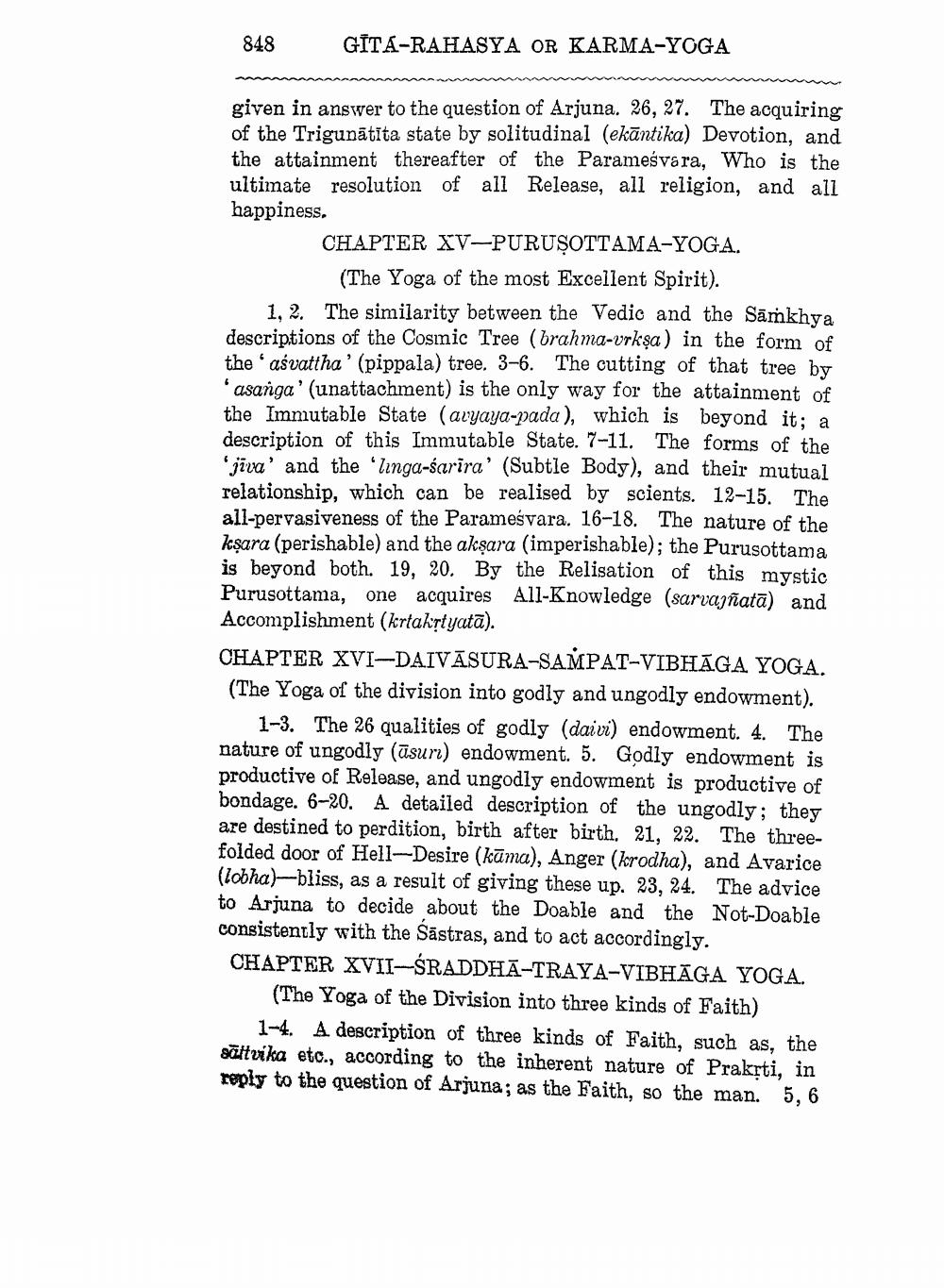________________
848
GĪTA-RAHASYA OR KARMA-YOGA
given in answer to the question of Arjuna. 26, 27. The acquiring of the Trigunātīta state by solitudinal (ekāntika) Devotion, and the attainment thereafter of the Parameśvara, Who is the ultimate resolution of all Release, all religion, and all happiness.
CHAPTER XV-PURUSOTTAMA-YOGA.
(The Yoga of the most Excellent Spirit). 1. 2. The similarity between the Vedic and the Samkhya descriptions of the Cosmic Tree (brahma-vrkşa) in the form of the asvattha' (pippala) tree. 3-6. The cutting of that tree by "asanga' (unattachment) is the only way for the attainment of the Immutable State (avyaya-pada), which is beyond it; a description of this Immutable State. 7-11. The forms of the 'java' and the 'linga-sarira' (Subtle Body), and their mutual relationship, which can be realised by scients. 12-15. The all-pervasiveness of the Parameśvara. 16-18. The nature of the ksara (perishable) and the aksara (imperishable); the Purusottama is beyond both. 19, 20. By the Relisation of this mystic Purusottama, one acquires All-Knowledge (sarvajñatā) and Accomplishment (krtakrtyatā). CHAPTER XVI-DAIVĀSURA-SAMPAT-VIBHĀGA YOGA. (The Yoga of the division into godly and ungodly endowment).
1-3. The 26 qualities of godly (daivi) endowment. 4. The nature of ungodly (ūsure) endowment. 5. Godly endowment is productive of Release, and ungodly endowment is productive of bondage. 6-20. A detailed description of the ungodly; they are destined to perdition, birth after birth. 21, 22. The threefolded door of Hell-Desire (kūma), Anger (krodha), and Avarice (lobha)-bliss, as a result of giving these up. 23, 24. The advice to Arjuna to decide about the Doable and the Not-Doable consistently with the Sāstras, and to act accordingly. CHAPTER XVII-ŚRADDHĀ-TRAYA-VIBHĀGA YOGA.
(The Yoga of the Division into three kinds of Faith)
1-4. A description of three kinds of Faith, such as, the sättvika etc., according to the inherent nature of Prakrti, in reply to the question of Arjuna; as the Faith, so the man. 5, 6




